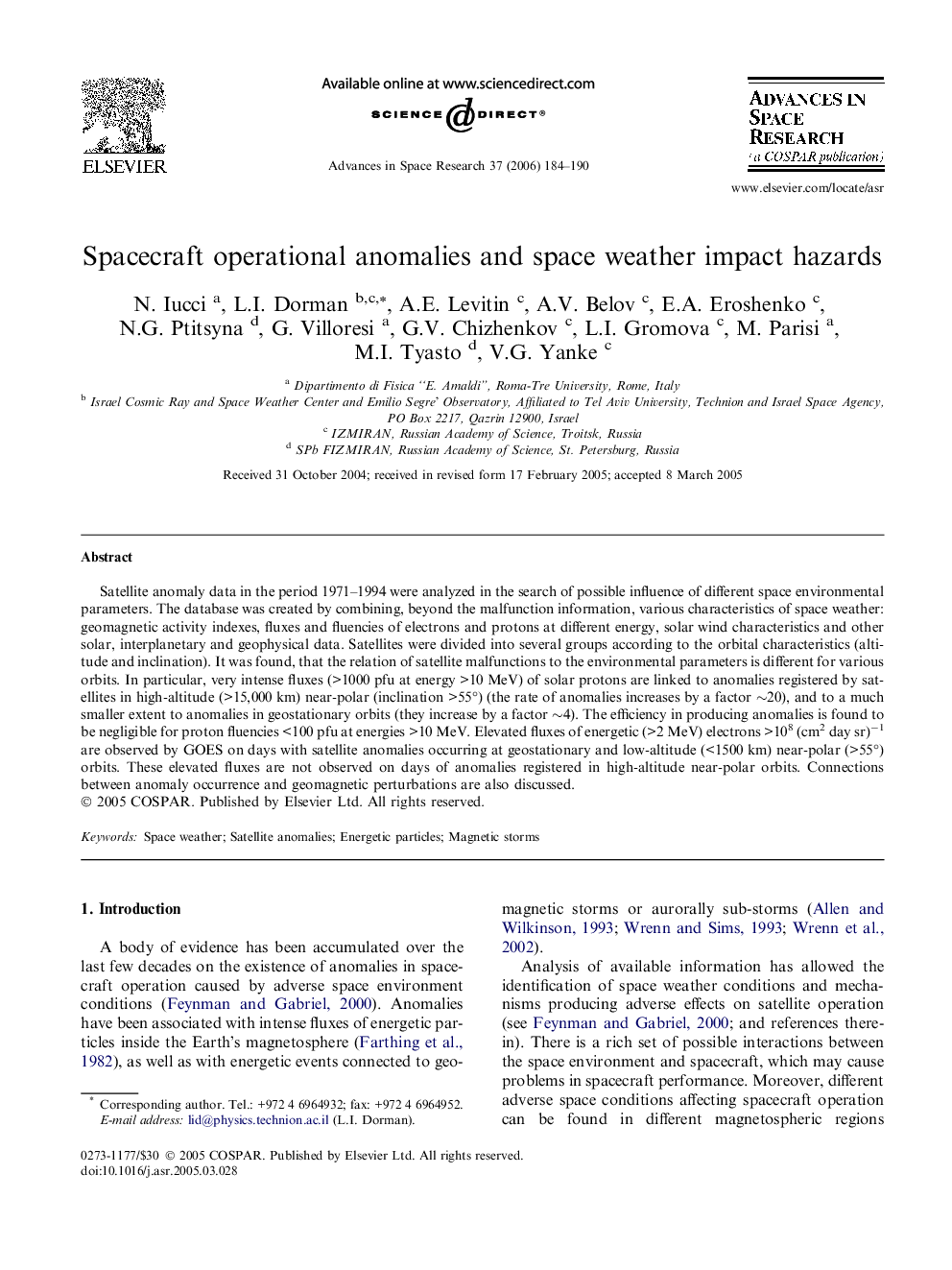| Article ID | Journal | Published Year | Pages | File Type |
|---|---|---|---|---|
| 1767530 | Advances in Space Research | 2006 | 7 Pages |
Abstract
Satellite anomaly data in the period 1971-1994 were analyzed in the search of possible influence of different space environmental parameters. The database was created by combining, beyond the malfunction information, various characteristics of space weather: geomagnetic activity indexes, fluxes and fluencies of electrons and protons at different energy, solar wind characteristics and other solar, interplanetary and geophysical data. Satellites were divided into several groups according to the orbital characteristics (altitude and inclination). It was found, that the relation of satellite malfunctions to the environmental parameters is different for various orbits. In particular, very intense fluxes (>1000 pfu at energy >10 MeV) of solar protons are linked to anomalies registered by satellites in high-altitude (>15,000 km) near-polar (inclination >55°) (the rate of anomalies increases by a factor â¼20), and to a much smaller extent to anomalies in geostationary orbits (they increase by a factor â¼4). The efficiency in producing anomalies is found to be negligible for proton fluencies <100 pfu at energies >10 MeV. Elevated fluxes of energetic (>2 MeV) electrons >108 (cm2 day sr)â1 are observed by GOES on days with satellite anomalies occurring at geostationary and low-altitude (<1500 km) near-polar (>55°) orbits. These elevated fluxes are not observed on days of anomalies registered in high-altitude near-polar orbits. Connections between anomaly occurrence and geomagnetic perturbations are also discussed.
Related Topics
Physical Sciences and Engineering
Earth and Planetary Sciences
Space and Planetary Science
Authors
N. Iucci, L.I. Dorman, A.E. Levitin, A.V. Belov, E.A. Eroshenko, N.G. Ptitsyna, G. Villoresi, G.V. Chizhenkov, L.I. Gromova, M. Parisi, M.I. Tyasto, V.G. Yanke,
